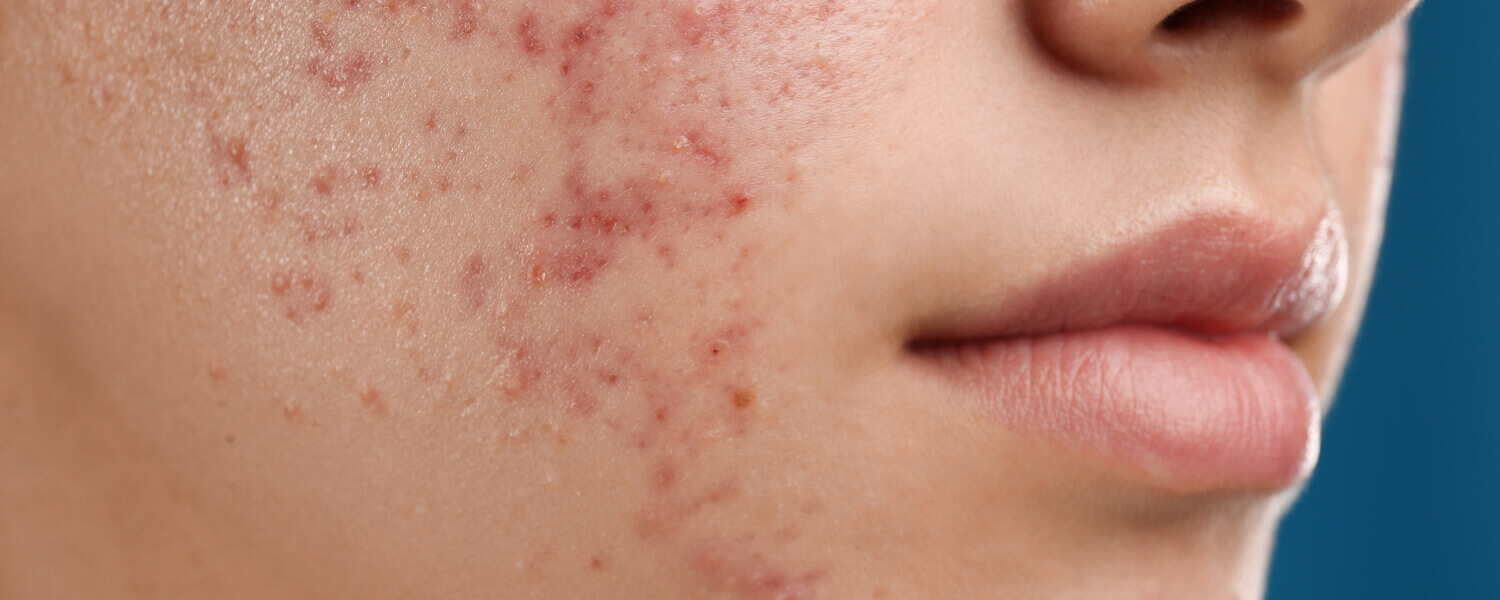What is acne and how to treat it
The skin is the largest organ of the human body and performs several functions. Every day, the skin is exposed to external factors and internal processes of the body. Outwardly, this manifests itself in the form of rashes, inflamed areas, dryness and peeling. One of the most common problems is acne, which is experienced by adolescent patients. Acne certainly does not decorate the face, and in adolescence it is especially difficult to put up with it.
Acne and its manifestations
Acne is a common skin disease and manifests itself as inflamed nodes, pits and bumps on the skin. The problem appears on areas of the skin with a large accumulation of sebaceous glands – on the face, chest, back.
In the absence of adequate treatment, the disease can last for months and even years, turning into a neglected form. Therefore, in order to effectively eliminate the problem, it is important to determine its etiology and the causes that have become the trigger of inflammation.

Depending on the age group of patients, the following types of acne are distinguished:
- baby;
- Teenage;
- adult.
The division is justified by the fact that each age period is characterized by its own causes of skin inflammation. Accordingly, the treatment has its own characteristics.
Regardless of the age of the patient, acne is characterized by such signs as increased secretion of the skin, many black dots, red pustular boils, scars and age spots.
Increased production of sebum was noted in the T-zone of the face (this is the frontal part, nose and chin). To check the functioning of the sebaceous glands on the face, you can test the skin. To do this, wash your face and after half an hour wipe it with a dry paper towel. If traces of fat remain on the paper, this indicates increased production of the sebaceous glands.
Black dots, or comedones, are the upper part of fatty turundas, which are oxidized upon contact with air. Such fatty deposits are the result of increased sebum secretion of the skin. In the normal state, the secret is produced in a small amount and serves to protect the skin from drying out, chapping, and other negative effects. With an increased volume of fat, it clogs the pores, becomes hard and clogs the exit. Where fat accumulates, bacteria actively multiply and inflammation develops. If you remove the pustules on your own, without observing the rules of hygiene, you can provoke a severe rash on your face. In addition, inaccurate removal can lead to injury and scarring at the site of inflammation.
Scars are areas of connective tissue that replace the damaged surface of the epithelium at the site of inflammation, may look like pits and nodules. After the acne passes, a reddish or bluish spot forms in its place.
Reasons for the appearance
To understand how to treat acne, it is necessary to identify the causes of the onset of the disease:
- Hormonal disbalance;
- Taking steroid drugs;
- Unbalanced diet;
- vitamin deficiency;
- Failure to comply with hygiene rules;
- The use of low-quality decorative cosmetics;
- Penetration into the body of infectious agents;
- Heredity;
- Immunodeficiency.
Acne Treatment
To determine the cause of acne, you should undergo a full examination. With this problem, you should contact a dermatologist. It is he who will prescribe the necessary studies and tests for acne.

Diagnosis to determine the causes of acne includes:
- testing for a certain type of hormones that regulate the sebaceous glands;
- testing for glucose tolerance;
- consultations of related specialists, to exclude diseases of a gynecological, endocrine nature, which caused rashes.
Acne in a teenager often occurs at the beginning of puberty, when there is an active work of the sebaceous glands. Since the pores are the widest on the skin of the face, back and chest, these areas are most often affected by a rash.
Therapy includes two types of drugs:
- outdoor;
- internal.
Acne treatment should be approached systematically. Masking rashes is not only ineffective, but also harmful: in this way, you can aggravate the condition of your skin.
No matter how convincing advertising looks, alas, there is no single magical remedy for acne that would suit everyone and help to cope with the disease once and for all. Only a doctor will be able to determine the cause of your acne and prescribe a competent treatment regimen.
The mild stage of the disease is treated with external means, the task of which is to prevent the development of an active inflammatory process and the reproduction of bacteria. After establishing the diagnosis, the doctor will prescribe you ointments, gels and creams with active ingredients in the composition. In the fight against acne, it is important to properly care for the skin. The specialist will definitely advise you on products for cleaning and moisturizing the skin.
Treatment of acne in adolescents and adults with more severe acne involves taking medications in conjunction with topical therapy. First of all, the treatment is aimed at eliminating the root cause of the rash – problems with the hormonal background, the gastrointestinal tract, etc.
